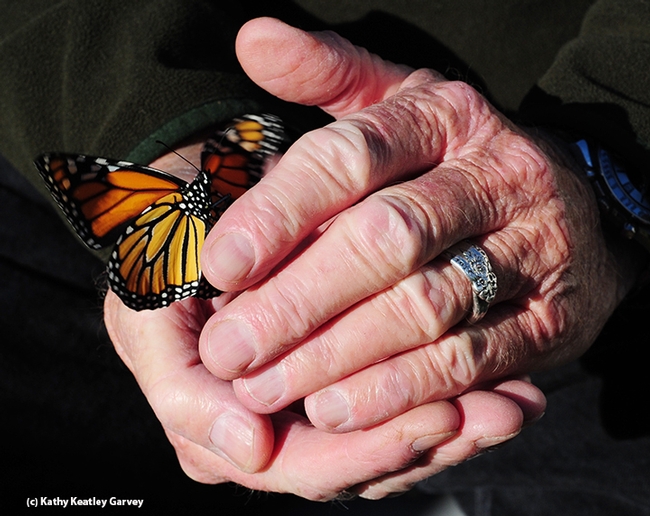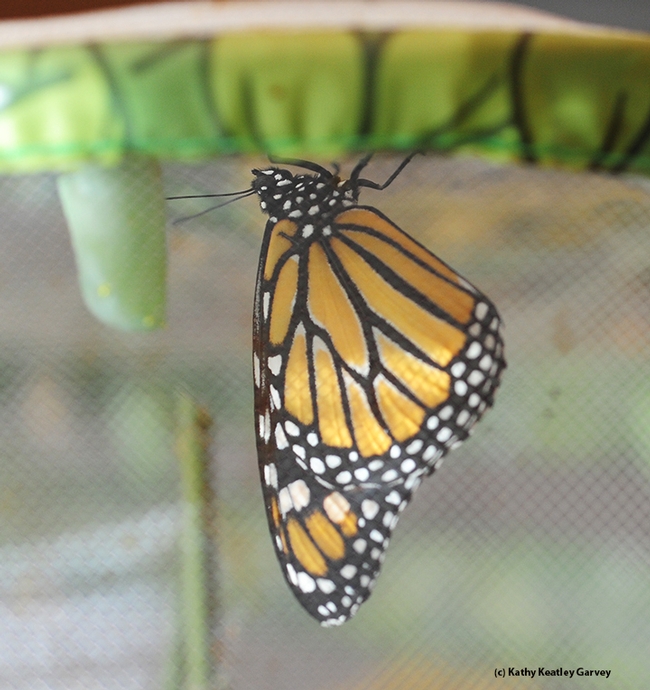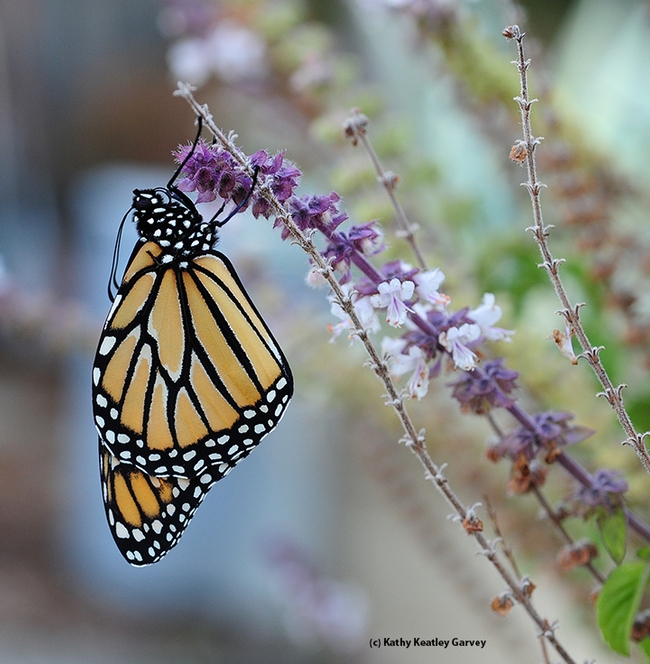A mid-life chrysalis?
Well, maybe not mid-life, but definitely out of season.
A female monarch butterfly eclosed today in our little indoor butterfly habitat. Two weeks ago, we “rescued” the caterpillar from a narrow-leafed milkweed plant in our Vacaville pollinator garden and brought it inside. Our goal: conservation. We sought to protect it from prey, including the resident scrub jays.
So, this morning, we lost a chrysalis and gained a butterfly. She was right on schedule: Eclosure after 10 days as a chrysalis.
When the temperature hit 61 degrees at around 1 p.m., we released her. She fluttered a bit, and then soared straight up, a good 80 feet high. Usually when we release the monarchs, they flutter around, sometimes touching down on a bush and sometimes soaring over it. This one wasted no time.
On its way to Santa Cruz?
Not sure. At 3:30 p.m., we spotted a monarch butterfly--same one?--roosting on our African blue basil as a dozen honey bees buzzed around, gathering nectar.
Meanwhile, the fellow members of her species are winging their way to their overwintering sites: the monarchs east of the Rockies to the Sierra Madre Mountains in Mexico, and those west of the Rockies to the California coast, including the Natural Bridges State Beach in Santa Cruz, and Pacific Grove in Monterey County. They cluster in eucalyptus, Monterey pines, and Monterey cypresses.
Monarchs do not fly at night. They travel only during the day and then find a roosting spot for the night. "Roost sites are important to the monarch migration," according to the U.S. Department of Agriculture's Forest Service. "Many of these locations are used year after year. Often pine, fir and cedar trees are chosen for roosting. These trees have thick canopies that moderate the temperature and humidity at the roost site. In the mornings, monarchs bask in the sunlight to warm themselves."
How many miles can monarchs travel a day? Between 50 to 100 miles, the Forest Service says. "It can take up to two months to complete their journey. The farthest ranging monarch butterfly recorded traveled 265 miles in one day."
Monarchs use a combination of directional aids, including the magnetic pull of the earth and the position of the sun. They take advantage of the air currents and thermals as they head toward their overwintering sights.
To think that we humans can barely make it out of the neighborhood without our GPS devices!
As of 5 p.m., the monarch roosting on the African blue basil is still there. The bees are gone, back to the warmth of their hives.
Tomorrow, our little buddy will warm her flight muscles, sip a little nectar, and take flight.
Safe travels, Miss Monarch!
Attached Images:

Moment of freedom--a female monarch is released. (Photo by Kathy Keatley Garvey)

This was the scene inside the butterfly habitat before her release. Note the chrysalis next to her. (Photo by Kathy Keatley Garvey)

In the late afternoon, this monarch found a place to roost for the night--on an African blue basil. (Photo by Kathy Keatley Garvey)